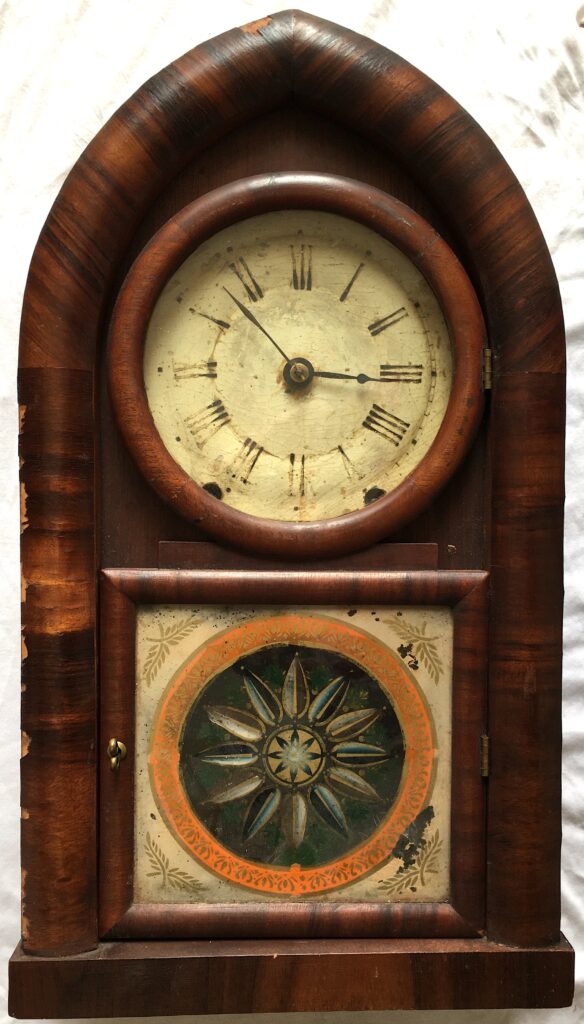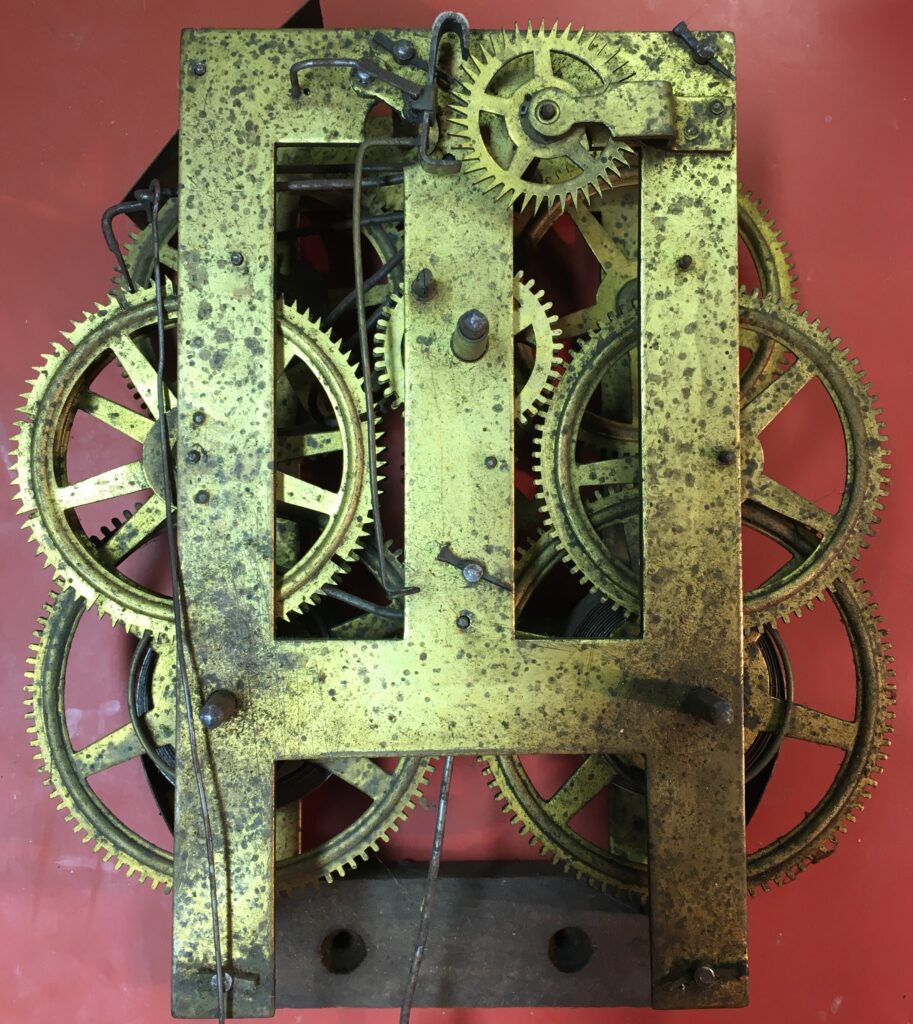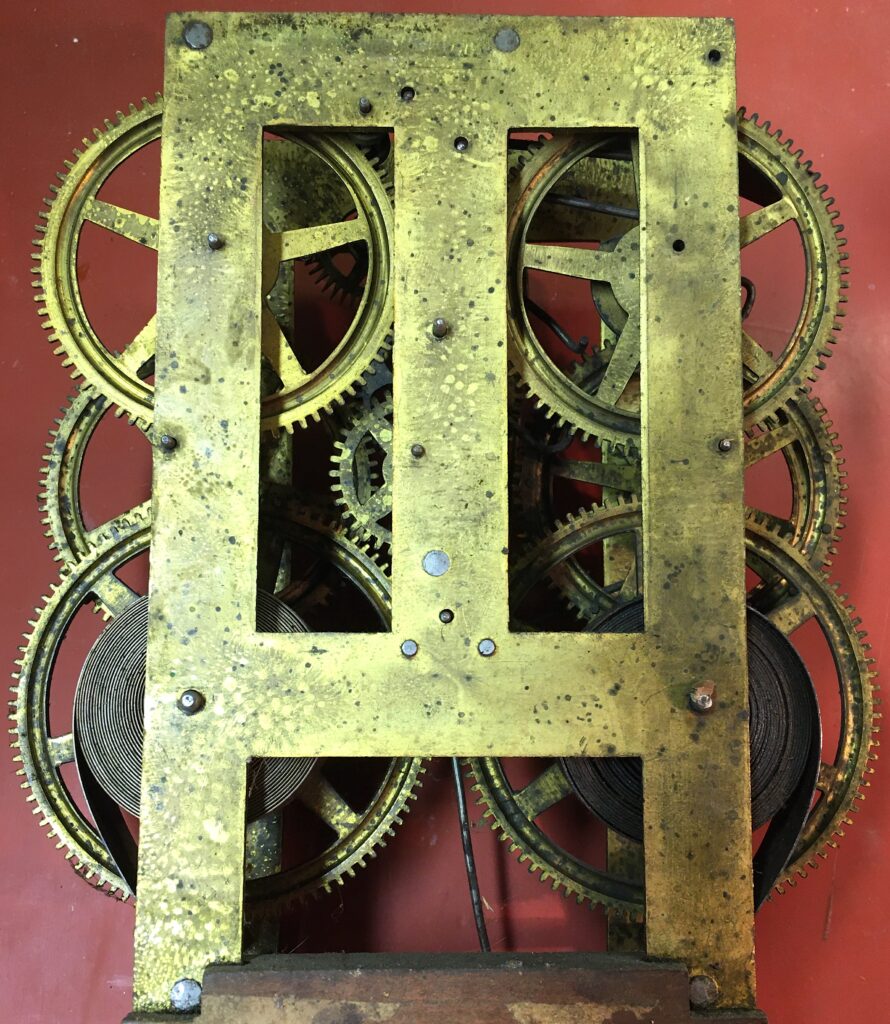This beehive clock, or round gothic as it was known at the time, was probably made in 1856 or 1857 shortly after the bankruptcy of the Jerome Manufacturing Co.
The tablet is a wonderful example of the type that often appears in clocks sold by New York manufacturers (or resellers). It is stylistically similar to ones by William Fenn, but the pattern does not match any of the known Fenn stencil patterns.
Note that the label claims Crosby & Vosburgh are the “Successors to the Jerome Mfg. Co.” As noted by Ken Roberts and Snowden Taylor in Forestville Clockmakers (page 145):
Such wording is a minor mystery. Possibly Crosby & Vosburgh had bought the stock from the New York outlet of the bankrupt Jerome Manufacturing Co., which had been listed in the directories at least as late as 1854-55 at 2 Cortlandt and 175 Broadway. Crosby & Vosburgh clocks do sometimes have late Jerome or early New Haven Clock Co. movements, but the movements of other makers also have been seen. Another possibility is that they were selling some stock from the Terry & Barnum Mfg. Co. The latter had merged with the Jerome Mfg. Co. in 1855 and had become bankrupt March 10, 1856. Their sales outlet was at 5 Cortlandt St. in the Gilsey Building, the same building in which the firm Crosby & Vosburgh was located. Or perhaps, somehow, the statement relates to the fact that at the time of its bankruptcy, over 99% of the stock of the Forestville Hardware & Clock Co. was owned by the Jerome Manufacturing Co. At any rate, the claim was probably good advertising even though not too truthful.
Front view, 8-day spring-driven movement, maker unknown. The fact that the movement is not a known Jerome product (or one from other makers, like the New Haven Clock Co. and A.S. Platt & Co., known to supply Jerome with movements) makes it unlikely that the clock was picked up by Crosby & Vosburgh in a bankruptcy sale. Update from 28 Dec 2022: When I was working on this posting, I was stymied in trying to run down possible makers of this movement, because the NAWCC website was undergoing maintenance, preventing me from accessing past issues of the Bulletin. An article on escape wheel bridges by Lee Smith in the December 1999 Bulletin identified a number of makers who used a necked escape wheel bridge oriented at 3 o’clock and with diagonal rivets angling up to the right. Two movements, by D. Pratt & Sons and Morse & Co., were illustrated in Bulletins I couldn’t access. With the website back up, I was able to rule out the Pratt & Sons movement, but the Morse & Co. movement bears a striking resemblance to the movement in the Crosby & Vosburgh beehive. Plate shape, time & strike trains, and escape wheel bridge position are identical. The only differences I can spot are the verge position and pendulum stud position (both of which are related to each other; change one and you have to change the other). The verge position on the Morse is below the escape wheel, whereas it’s to the left of the escape wheel on the Crosby & Vosburgh. The pendulum stud is displaced to the left and upwards on the Crosby & Vosburgh compared to the Morse. I believe the repositioning of the escape wheel and pendulum stud may have been to accommodate different size cases. Interestingly enough, Morse & Co. were in business from 1850-1855. In January 1855 their factory was destroyed in a fire. Crosby & Vosburgh may have been able to acquire movements from Morse & Co. in a “fire” sale.
Rear view, 8-day spring-driven movement.



